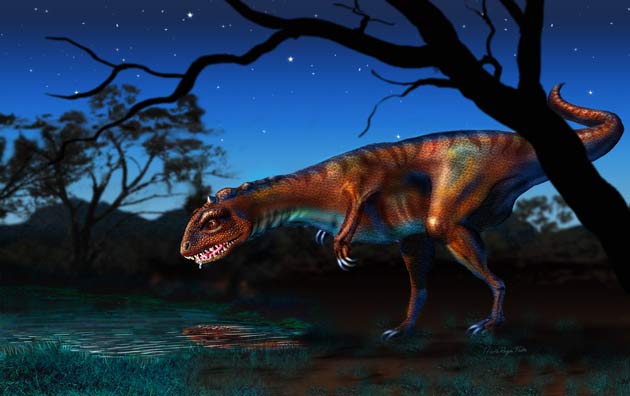New Recipe: How to Make a Mass Extinction

Apocalypses may not be all fire and brimstone. A growing number of paleontologists say that Earth-smashing meteors cannot take all the blame for the many mass extinctions that dot our planet's fossil record. The true causes seem to be more complex.
"The [meteor] impact model has been so successful because it's easy to explain and easy to understand," said Nan Arens of Hobart and William Smith College in Geneva, NY. "However, the simple answer isn't always the best one."
At the annual meeting of the Geological Society of America this week in Philadelphia, Arens and others argued that the combined punch of volcanoes, climate change and impacts leaves many species teetering on the brink of extinction. One final blow brings collapse.
The same scenario could be happening now.
Dino disappearance
The most famous of all giant space rocks is the one that presumably killed off the non-avian dinosaurs 65 million years ago, in the so-called K-T extinction event. But this may not be the whole story.
For several years, Gerta Keller of Princeton University and her colleagues have been arguing that the widely-accepted dino-killer—a space rock that left a 100-mile-wide crater around Chicxulub, Mexico—happened 300,000 years too soon. Keller therefore believes that this impact was just one of several smoking guns.
Get the world’s most fascinating discoveries delivered straight to your inbox.
"Impacts by themselves simply don't cause major mass extinctions," she told LiveScience.
Keller advocates a scenario in which the Chicxulub meteor combined with volcanoes in India and global warming to unsettle the ecologic balance. She has compiled data prior to K-T event that show many species shrinking in size—a sign of an unhealthy environment.
Keller speculates that a second, currently unidentified meteor crashed after Chicxulub. This impact, in conjunction with a surge in volcanism, "dealt the final blow to a Cretaceous biota already on the brink of extinction," Keller said.
Great Dying
A similar environmental deterioration may have preceded the biggest retreat in life's history.
The P-T extinction event, or Great Dying, occurred 251 million years ago when up to 90 percent of all species were snuffed out. David Bottjer's group from the University of Southern California has studied the fossil record and found clear signs that species were in peril long before they disappeared.
The reason: "The Earth got sick," Bottjer said.
The illness began when Siberian volcanoes triggered global warming, he explained. This reduced ocean circulation and the oxygen supply. These hazardous conditions were a boon for sulfur-eating microbes, which released toxic hydrogen sulfide into the atmosphere, finishing off most of the life that remained.
Common diagnosis
A sick Earth succumbing to a final shock is apparently a common extinction formula. Arens and her colleagues analyzed geologic data from the last 488 million years and found more species died out when the environment was first stressed and then stung.
Specifically, the researchers compared stress-inducing volcanic activity and catastrophic meteor impacts. Only when the Earth experienced both did extinction rates significantly increase.
"Periods of stress are going to reduce population sizes," Arens said. With reduced numbers, "species are vulnerable to pulse catastrophes."
On the flip side, an unstressed environment is resilient to geologic and climatic disasters because life is diverse and geographically spread out.
And now?
Applying their model to the present, Arens and her collaborators speculate that human activity has both stressed the environment with agriculture and shocked it with fossil fuel burning.
Whether or not this is an accurate description, both Bottjer and Keller agree that we are in a precarious situation.
"Under [current] conditions any disaster that might strike (impact or volcanism or major greenhouse warming), which ordinarily would not cause major extinctions, will put much of Earth's biota at risk of extinction," Keller said.
Related News
- Al Gore: Earth is in 'Full-Scale Planetary Emergency'
- The Perils of Being Huge: Why Large Creatures Go Extinct
- Humans Fuel Worst Extinction Since End of Dinosaurs
- Scientists Debate Dinosaur Demise
Explore Dinosaurs



